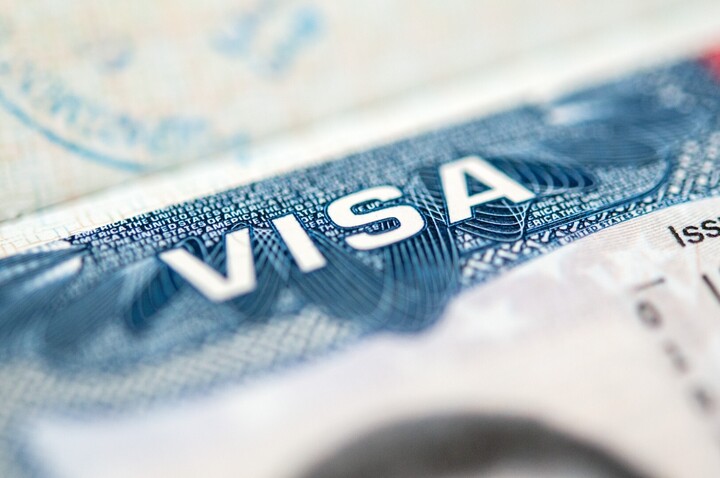Specific Injuries

Need an Employment-Based Green Card Lawyer?
If you’re seeking permanent residency in the United States through employment, you’ve likely come across the EB1, EB2, or EB3 visa categories. Each of these green card options is designed for individuals with different skill levels, education, and employment backgrounds. At Hussain & Gutierrez Law, we guide professionals, skilled workers, and employers through every step of the employment-based green card process. From documentation to final approval.
Whether you’re an executive, engineer, researcher, or tradesperson, we’ll help you determine which EB category fits your situation and ensure your petition meets every requirement for approval.
Call 888-997-3701 for a free consultation.
What Is an EB1, EB2, or EB3 Employment-Based Green Card?
Employment-based green cards (also called EB visas) allow foreign nationals to obtain U.S. permanent residency through employer sponsorship or, in some cases, self-petitioning.
EB1 (Priority Workers)
At Hussain & Gutierrez Law, we guide professionals and sponsoring employers through every step of the EB1, EB2, and EB3 green card process. Whether you’re a research scientist, a skilled technician, or a multinational executive, our team can help you build a strong case.
Our services include:
- Evaluating your eligibility for the right visa category
- Guiding your employer through the PERM and recruitment process
- Preparing strong supporting documentation, including recommendation letters
- Managing communication with USCIS and DOL
- Helping you transition to permanent residency through adjustment of status or consular processing
With a deep understanding of U.S. immigration law and a personalized approach, we help you move forward with confidence.
Contact us today for a consultation at 888-997-3701.
Employment-based green cards (also called EB visas) allow foreign nationals to obtain U.S. permanent residency through employer sponsorship or, in some cases, self-petitioning.
EB1 (Priority Workers)
- Individuals with extraordinary ability in the sciences, arts, education, business, or athletics
- Outstanding professors and researchers
- Multinational executives and managers
EB2 (Advanced Degree Professionals & Exceptional Ability)
- Individuals with an advanced degree (master’s or higher)
- Those with exceptional ability in the sciences, arts, or business
- National Interest Waiver applicants (self-petition allowed)
EB3 (Skilled Workers, Professionals, and Other Workers)
- Skilled workers (with at least 2 years of training or experience)
- Professionals with a bachelor’s degree
- Other workers (unskilled labor requiring less than 2 years’ experience)
Each category comes with different eligibility criteria and documentation requirements, which our team will help you navigate with confidence.
Eligibility and Documentation Requirements
Each green card classification demands detailed documentation and proof of eligibility. Here’s what you may need:
- Job offer letter and employment verification
- Employer’s sponsorship documentation (Form I-140)
- Degrees, licenses, and professional certifications
- Letters of recommendation (especially for EB1 and EB2)
- Evidence of extraordinary or exceptional ability (publications, awards, patents, etc.)
- Proof that no qualified U.S. worker is available (for EB2/EB3 with PERM)
At Hussain & Gutierrez Law, we help you gather, organize, and present your documentation in a compelling and complete petition.
Application Timeline and Labor Certification

The process and timeline vary depending on which EB category you’re applying under:
- EB1 petitions are often faster and do not require labor certification (PERM).
- EB2 and EB3 applicants typically require PERM, a process where the employer must test the U.S. labor market to prove no qualified U.S. worker is available for the position.
Typical Timeline:
- PERM Labor Certification: 6–9 months (if required)
- I-140 Petition: 6–8 months
- Adjustment of Status or Consular Processing: varies by country of origin and visa bulletin backlog
Our legal team works to reduce delays and avoid mistakes that can slow down your case.
Path to Permanent Residency

Once your EB petition is approved, the final step is applying for your green card:
- If you’re already in the U.S., you may file for Adjustment of Status (Form I-485).
- If you’re outside the U.S., you’ll go through Consular Processing at a U.S. embassy or consulate in your home country.
In either case, we will handle your forms, scheduling, and interview preparation so you’re not navigating it alone.
Common Challenges in the Employment-Based Green Card Process
The employment-based green card process can be highly rewarding, but it’s also filled with complex legal and procedural requirements that can delay or derail an application if not handled correctly.
Some of the most common issues applicants face include:
- Incomplete or inaccurate documentation: USCIS requires substantial proof of qualifications, employment offers, and eligibility. Even minor mistakes can lead to delays or denials.
- PERM delays: Labor certification can take months and may require employer recruitment efforts that must follow strict timelines.
- Priority date backlogs: Applicants from certain countries (like India or China) often face long waits due to annual visa caps.
- Inconsistent job descriptions: If your position or job duties change during the process, it may affect your eligibility.
Working with an experienced immigration attorney can help you anticipate issues and respond quickly to Requests for Evidence (RFEs) or Notices of Intent to Deny (NOIDs).
How Hussain & Gutierrez Law Can Help
At Hussain & Gutierrez Law, we guide professionals and sponsoring employers through every step of the EB1, EB2, and EB3 green card process. Whether you’re a research scientist, a skilled technician, or a multinational executive, our team can help you build a strong case.
Our services include:
- Evaluating your eligibility for the right visa category
- Guiding your employer through the PERM and recruitment process
- Preparing strong supporting documentation, including recommendation letters
- Managing communication with USCIS and DOL
- Helping you transition to permanent residency through adjustment of status or consular processing
With a deep understanding of U.S. immigration law and a personalized approach, we help you move forward with confidence.
Contact us today for a consultation at 888-997-3701.
Why Choose Hussain & Gutierrez Law?

Navigating employment-based immigration laws can be overwhelming, especially when you’re trying to focus on your career or growing your business. We simplify the process, identify the strongest category for your case, and manage every detail of your petition.
Here’s what makes us different:
- Employment-Based Immigration Focus: We specialize in EB1, EB2, and EB3 petitions.
- Personalized Strategy: Every client gets a tailored legal plan, not a one-size-fits-all approach.
- Multilingual Support: Our attorneys and staff communicate fluently in English and Spanish.
From Fortune 500 executives to skilled tradespeople, we proudly represent individuals across industries who want to build their lives in the U.S.
Schedule a free consultation with Hussain & Gutierrez Law today at 888-997-3701.


Have a question? Ask our employment-based green card lawyers
The EB1 is for individuals with extraordinary ability, outstanding professors/researchers, and multinational executives. EB2 is for professionals with advanced degrees or exceptional ability. EB3 is for skilled workers, professionals, and other workers.
Yes, in most cases. EB2 and EB3 generally require a job offer and a certified labor certification (PERM). EB1 applicants may qualify without a job offer depending on their category.
Timelines vary. EB1 is usually faster, especially for those not needing PERM. EB2 and EB3 can take 1–3+ years depending on your country of origin and visa bulletin priority dates.
Yes. If you are legally present, you may be able to file for Adjustment of Status (Form I-485) without leaving the country.

